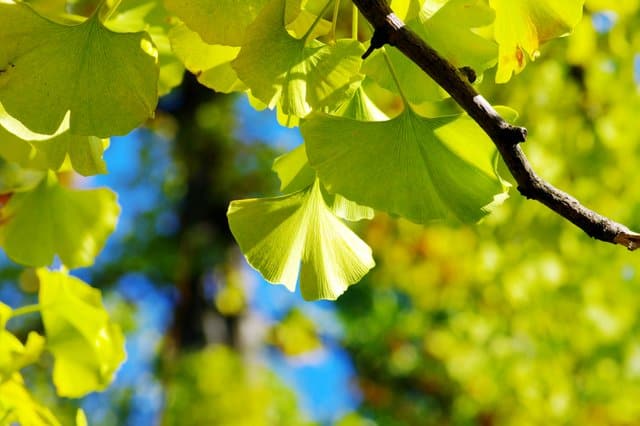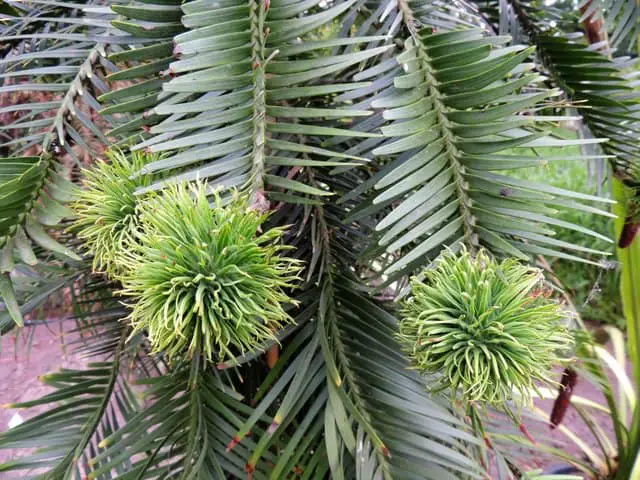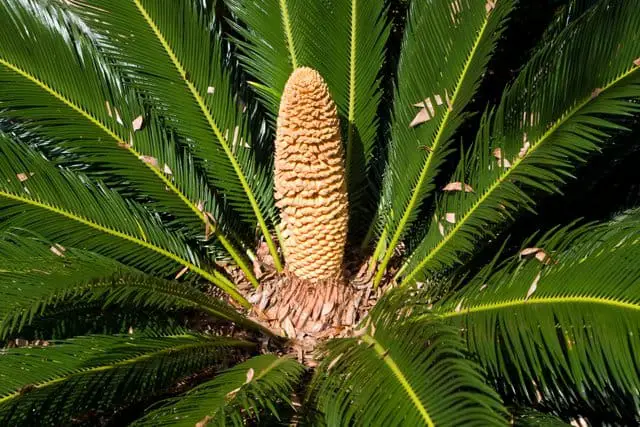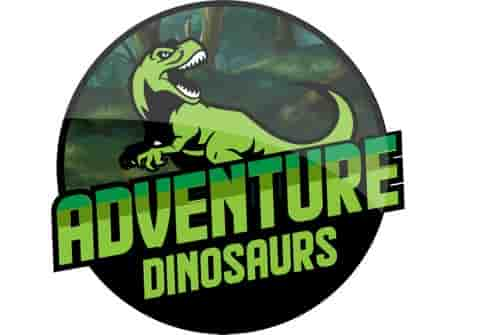Data suggests that most dinosaurs were herbivores or plant-eaters, up to 65 percent. That left about 45 percent that were carnivores, meaning they were quite outnumbered. Fossilized remains of dinosaurs indicate the types of vegetation that were eaten. In fossilized stomach contents and coprolite (dinosaur dung), lots of fibrous plant matter was found.
During the different periods of the Mesozoic era, the earth’s climate changed. In the Triassic and Jurassic, it was considerably hotter with less vegetation and no flowering plants. During the Cretaceous period, the earth became cooler and tropical, and the variety of plants multiplied. It makes me wonder, when dinosaurs roamed the earth, which plants did dinosaurs eat?

Which Plants Did Dinosaurs Eat?
Dinosaurs ate the following plant types which existed or began to exist during certain periods of the Mesozoic Era, and still exist today:
● Cycads
● Cypresses
● Pines
● Yews
● Redwoods
● Gingko plants
● Mosses
● Ferns
● Angiosperms
Herbivorous dinosaurs were consumers of a broad spectrum of plant life flourishing during the Jurassic and Cretaceous periods. Dinosaurs included ferns in their diet, ranging from common types to the more extensive tree ferns and pteridophytes.
They also devoured cycads with their distinct woody trunks and feathery leaves. Evidence in the fossil records indicates dinosaurs savored ginkgoes, a plant characterized by its resilience and distinctive fan-shaped leaves.
Additionally, the terrestrial diet of dinosaurs incorporated palms and grass, while mosses added a touch of moisture to their meals. Living among sprawling forests, coniferous trees, specifically pines, and horsetails enriched their dietary intake.
Table of Contents
Over time, as angiosperms – flowering plants, emerged in the late Cretaceous period, they added a new delicacy to the vast gastronomy of dinosaurs. Lastly, dinosaurs likely consumed algae inadvertently in aquatic environments, encapsulating the staggering dietary diversity of these magnificent beasts.
Yes, dinosaurs had access to varied vegetation, ensuring their diets were anything but boring. We’ll further discuss dino herbivores’ diets and take a closer look into hadrosaurs and sauropods and their respective plant preferences in today’s post. You’re not going to want to miss it!
What Did Herbivorous Dinosaurs Eat?
There were different types of plants and trees during the periods of the Mesozoic era.
● Triassic – about XX million years ago, the earth was drier and hotter, and the terrain was often desert landscapes. Pine trees, palm trees, and plants that could live in hot climates prevailed.
● Jurassic – about XX million years ago. The earth was still hot but started to become humid. Forests developed year bodies of water. Many different trees developed.
● Cretaceous – about XX million years ago. The earth became tropical or subtropical in many areas, and angiosperms – true flowering plants – developed during this period.
Let’s take a closer look at some of these plans in detail.
The Different Types of Trees
Cypresses
The Hell Creek Formation in Montana was home to some dinosaurs during the Late Cretaceous Period. The bald cypresses that grew here with conifers, ginkgoes, ferns, and angiosperms were abundant food sources. The following dinosaur species lived in this area by the least to the most prolific: Troodontidae, Pachycephalosauridae, Dromaeosauridae, Hypsilophodontidae, Tyrannosauridae, Ornithomimidae, Hadrosauridae, and Ceratopsidae.
Like cycads, you can still find bald cypresses today, connecting you a little closer to the dinosaurs that would feed on these tall trees with lush foliage.
Pine
Pine trees were easy pickings’ for long-necked dinosaur species such as the Alamosaurus, Apatosaurus, Diplodocus, the Spinophorosaurus, and other sauropods. As we talked about in our post about these dinosaurs, there’s debate about whether they’d use their long necks to reach up into the trees to eat what other dinosaurs couldn’t reach or if they’d feed on ground cover, in this case, pine needles.
The Wollemi is a pine tree species nicknamed the Dinosaur Tree since it’s believed to have lived when dinosaurs did. It made a resurgence in the mid-1990s and is currently at risk of extinction, sadly. If you would like to help on the conservation of this “dinosaur pine”, you can purchase one and have it shipped to you. https://www.wollemipine.com/
YouTube Video About the Wollemi Pine That Existed During the Days of the Dinosaurs
Yews and Conifers
Conifer trees were also a dietary staple of plant-eating dinosaurs, including the yew or Taxus. These conifers don’t necessarily grow quickly, but they can live for a long time. It should come as no surprise then that the yew’s history extends back more than 200 million years.
Sauropods were quite fond of conifers, as was the Stegosaurus, which would also eat cycads.

Redwoods
The coast redwood or Sequoia sempervirens could have been the first redwood ever. Experts believe the redwood has been on the earth for upwards of 65 million years, which was right as the Cretaceous Period ended.
At the time, the Velociraptor, Triceratops, and T-Rex were the kings of the jungle, so to speak, although only the Triceratops was a plant-eater. Coast redwoods would reach amazing heights, up to 400 feet, so the Triceratops would likely feed on pines and twigs that would fall from the tree.
Ginkgo Plants
The Ginkgo biloba is another long-living plant that keeps the Ginkgophyta division alive when all other related plants have since gone extinct. Some ginkgo plants have a history going back 245 or 270 million years. Other experts estimate the plant was around as few as 66 million years ago.
The ginkgo lived on the earth before the major periods of the dinosaurs, but when dinosaurs all went extinct, the ginkgo plant lived on. (Source)
TABLE OF Unique or Rare PLANTS THAT DINOSAURS ATE THAT STILL EXIST TODAY
Redwoods, pine trees, Wollemi Pine, Ginko, Cypress, Moss
Palm Tree Types
Cycads
Cycads are gymnosperms with visible external seeds. They have an appearance akin to palm trees, enough so that some people confuse cycads with palms. (Source) Although cycads still exist today, if you have one in your living room, it’s not the same species that dinosaurs used to feed on.
Those were Bennettitales or cycadeoids, which existed 66 to 252 million years back. Bennettitales were probably at least somewhat toxic. Some dinosaur species could feed on them, although we’re not sure which ones.
Cycads have a long-running history as well, enough that they’ve been nicknamed living fossils. However, cycads also evolved quickly, developing defenses through toxins to stay alive and increase. Dinosaurs couldn’t evolve as quickly, so they largely avoided the consumption of cycads.
Vegetation That Didn’t Grow Tall
Mosses
Lycophytes like club mosses that grew between the Cretaceous Period and the Jurassic Period also lived to the Carboniferous Period about 300 million years back, where there were no dinosaurs.
Accompanying mosses around this time were horsetails, which some experts believe weren’t widely consumed by dinosaurs because the plant’s rough exterior would have worn down their teeth.
Ferns
Not many plants have existed on this planet as long as ferns, as they date to the Mesozoic Era around 252 million years ago. Outdating even angiosperms, with as many as 12,000 different fern species in all, dinosaurs surely had lots of options even if all those fern species didn’t quite exist yet.
Angiosperms
The term angiosperm is just another way of referring to a flowering plant, which would indeed be on the menu for many dinosaurs. The most ancient angiosperms may have existed on our planet some 90 or 140 million years ago, although experts still argue exactly when these flowers originated. (Source)
It’s believed that six types of angiosperms may have grown during the time of the dinosaurs.
What Was the Biggest Plant-Eating Dinosaur? Plants That Sauropods Ate
Sauropods and prosauropods (considered sister taxa or primitive sauropods) were herbivorous. Because some of these dinosaurs were extremely tall, the plants they ate were treetops. Some scientists t also believe these long neck dinosaurs ate ground vegetation.

Let’s talk more about sauropods, as they were considered the largest of all the dinosaurs.
Sauropods – The Giant Plant-Eating Dinosaurs
The name sauropod means “lizard-footed,” but it’s mostly the sauropods’ necks that are so noteworthy. As we discussed earlier, those necks were very long. The head of a sauropod was much smaller by comparison, with a sturdy body and a tail that was not as lengthy as the neck but still quite considerably sized. The size of a sauropod’s gut was so large in part to promote plant digestion.
The biggest dinosaur plant-eaters were Titanosaurs, a group of sauropods from the classification Sauropodomorpha. These dinosaurs could eat a lot, and they needed to because they were the tallest, longest, and heaviest animals to have existed on earth. Titanosaur sauropods have been found in North America, South America, Africa, and China.
Sauropod Teeth Were Adapted for Eating Vegetation
Sauropods had either flatter teeth described like pegs or rounder teeth, depending on the species. The Diplodocus’ teeth were flat, according to dentition studies. Due to its tooth shape, the Diplodocus probably used his teeth to rake or nip at leaves and fronds, most likely softer ones.
Plants That Sauropod Ate
The rivers, lakes, and swamps the sauropods called home were also rife with conifers, a dietary staple for many a sauropod. If a sauropod grew tired of conifers, it could also readily feed on horsetails, club mosses, ferns, Bennettitales, cycads, and ginkgo plants.
————————————————————————————————
Related Dinosaur Articles You Might Also Be Interested In:
Herbivore Dinosaurs – What’s So Cool About Them? (Types, Sizes, Facts)
Types of Duck Billed Dinosaurs -Names, Habitats, Nests
What are the Different Dinosaur Habitats? 9 Places Where They Lived
————————————————————————————————
What about Hadrosaurs and Armored Dinosaurs? What Did They Eat?
We touched on Stegosaurus’s diet, but what about other armored dinosaur species like him, such as the Ceratopsian? You’re also curious about how duck-billed dinosaurs like the hadrosaurs managed to eat and what they feasted on.
Let’s talk about both now.
The Hadrosaur Diet
The Hadrosauridae had boned snouts that tapered to a flat, bill-like mouth, sort of like today’s ducks. That said, the hadrosaur doesn’t share that much in common with ducks. For instance, ducks don’t have teeth, but hadrosaurs did, hundreds of them. They used the teeth to grind down plants. Hadrosaurs could even grow new teeth if they wore down their current set.
How did the beaks come in handy? The hadrosaur would use its beak to crop or cut food sources, such as to remove leaves from a tree. This dinosaur may have even stored food in its cheeks, although we need more research to confirm this.
Although the hadrosaur had a rather unconventional mouth than other dinosaur species, they were regarded as quite successful evolutionarily. It took paleontologists and even scientists a long time to understand the hadrosaur beak’s usefulness, but now it’s clear.
Unfortunately, it’s not quite as clear what the hadrosaur diet consisted of. Hadrosaurs could have plucked twigs and leaves from taller trees, or they may have fed off the ground or close to it. According to droppings of hadrosaurs that are fossilized, or coprolites, some hadrosaurs in the Late Cretaceous Period would consume rotting wood, and not by accident.
Why? Perhaps available food was sparse at the time. Since rotting wood does have fungi, that was something the hadrosaurs could ingest to stay alive.
Armored Dinosaur Diet
The Triceratops was once identified as a hadrosaur, although today, it’s considered a ceratopsid or a marginocephalian. The Ceratopsia also isn’t a hadrosaur, but it did have a beak. This beak wasn’t the same shape as a hadrosaur’s, as it had the curvature of a parrot’s beak. This feature would have lent the Ceratopsia great biting ability and force.
Their teeth were shaped like leaves; the teeth went all the way into their cheeks. The Ceratopsia could slice through food instead of grinding it down like the Diplodocus.
Going back to the Triceratops, this dinosaur species had a heavy head they often carried low. They couldn’t or wouldn’t raise their heads high to eat trees, so whatever fell on the ground was part of the Triceratops’ diet. If the grounds were bare, the dinosaur could charge at a tree with its mouth or horn to knock leaves down.
The semi-beak shape of the Triceratops’ mouth, which was narrow, and the deep jaws could have helped this dinosaur pluck and grasp food but not benefit him much when it came to biting. With teeth columns of 40 apiece for both sides of the Triceratops’ jaw, it had upwards of 800 teeth altogether. Most of them weren’t used, but those in action could move vertically to shear plant food.
Final Thoughts
Although we have an image in our heads of dinosaurs being ferocious, even murderous creatures, most dinosaur species ate plants, not each other. Whether it was a beak-like mouth, a long neck, or plentiful teeth that helped them reach food, dinosaurs had many methods for accessing the plants they would feed on over their various periods of existence.
Some of these plants have survived to this day, so you can start a garden with the same plant species that outlived the dinosaurs!
